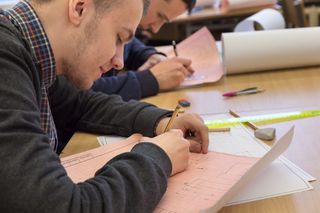Relationships
The Right Time to Give a Second Chance
Learn when to offer second chances to the students you lead.
Posted February 27, 2019
Ashton just got suspended from his high school for a week for cheating. His mother, Jan, was beside herself, because six other students (Ashton’s classmates) got excused for their misconduct, only having to serve one detention period.
Jan, obviously, felt it wasn’t fair. Why should her son get a suspension when other boys who had cheated get a lesser penalty?
If you’re an educator, you know the answer to this question is complex.

Two Tendencies in Education
When it comes to school discipline, adults tend to lean into one of two dispositions:
1. Enforcement of rules
These people value fairness and justice. They feel leaders should follow the letter of the law for each student, making no exceptions to the rules.
2. Mercy for students
These people value lessons learned and restoration. If they feel a student appears remorseful, the best response is to get them back in the classroom.
These are two sides of a coin, and there’s value in both sides. Neither works without the other. The story above is far more complicated than Jan realized. Her son had acted obstinately toward the system and had repeatedly questioned the depth of his offense. The others had demonstrated a repentant attitude and had already tried to make restitution with the teacher. In this situation, Ashton might have been done a disservice to be let off the hook. Allow me to explain.
An Experiment in Social Order
Moral psychologist Jonathan Haidt reminds us of some Social Coordination Experiments that shed light on this reality. In one, the experimenter gave every participant in a community a sum of money to use in a game. Each person could either hold onto the money or invest it in a common pool. Later, if the total amount increased, everyone received more money. In essence, they shared the pool.
They all quickly learned that each individual was actually better off putting no money in and hoping everyone else does, giving them the best of both worlds. They represent the “free riders,” who want to gain from the system but not invest in it. In order to prevent people from doing this, however, the experimenters later allowed this community to penalize those who didn’t cooperate; the ones who wanted to enjoy the perks but pay no price. In short, there was a price tag for no cooperation.
But then the experiment became interesting.
The option was given to join a second group that had no punishments or penalties. Obviously, some didn’t want to be punished so they joined that group. A group with no penalties sounds great. They played the game for a while, but soon realized people were cheating. With no consequence for selfish (or non-social) behavior, everyone took advantage of it. Things went south fast.
Later, when given the option to rejoin the group that allowed for penalties, most did so. Even though no one likes being punished for behavior—they quickly learned we all belong to a social system and life works better when we work within the system. The price tag of cooperation and submission to it actually turns out to be a benefit. In fact, for life to work well—we must believe in the system. Bottom line? Our school system must work and students must buy into that system. When they don’t trust the system, habits and attitudes descend very quickly.
When we know that people are playing by the rules, we tend to trust and cooperate.
The Art of Second Chances
Only within this reality, can we make progress. As individuals, students usually hate rules. As members of a community (when they understand it), students like the rules. So, there are consequences to too many rules AND too many second chances. Success revolves around the balance of rules and relationships.
1. Rules minus relationships equals rebellion.
When students only feel the system and rules are at work—and have no relational connection to those who enforce them—the moment they can rebel or beat the system, they will. This is true for our families as well. If kids feel the home revolves around a set of rules, they often rebel when they leave home.
2. Relationships minus rules equals rebellion.
On the other hand, if the system continues to offer “second chances” to students, generally they stop believing the system works. They assume they’ll get off the hook, and push the envelope. Chaos is birthed and entitlement sets in when the system is weak. Students take advantage of grace.
So, at the beginning of a school year or new semester, be sure students see both of these realities at work. Word must get out that authorities will enforce the system, but also that leaders have not lost their humanity, and they do offer mercy in some cases. Then, inform your faculty so they can relay to students why the outcomes occurred. You can reinforce great conduct if kids know how and why leaders make decisions. Second chances are appropriate when:
- Administrators have established a system that enforces rules.
- Administrators discover a forgivable motive behind the offense.
- Students expect the system to work and for penalties to be leveled.
- Students display a repentant attitude and demonstrate steps of restitution.
This would have helped Ashton measurably.




